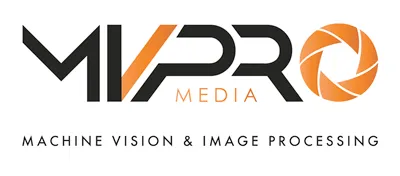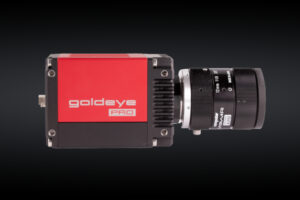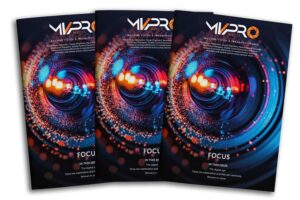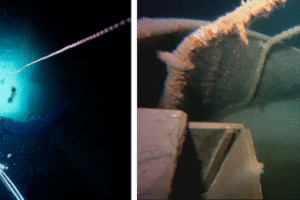At the 2023 CES, Greenerwave and Plastic Omnium transform body panels into 4D imaging radar to give autonomous cars supervision.
Greenerwave, the deeptech startup specializing in the control of electromagnetic waves, is joining forces with Plastic Omnium, the leader in sustainable and autonomous mobility, to create 4G imaging radars of unmatched performance thanks to their ability to classify objects, their resolution of less than half a degree over wide fields of view, their simultaneous perception of long and short distances, and their robustness, More than a new radar, this revolutionary concept can transform all body panels into intelligent surfaces with similar imaging capacities to Lidar but without its drawbacks and at a reasonable cost. This is a new standard to accelerate the development of autonomous cars!
Sensors have been too limited until now for the development of autonomous cars
Together with cameras and ultrasound sensors, radars are key components for autonomous driving. But faced with their limitations (insufficient resolution to classify objects in complex environments), automotive manufacturers and parts makers have turned to two other technologies: Lidars and 4G imaging radars.
While Lidars can capture precise images of the vehicle’s environment thanks to their good resolution, they remain costly, hard to integrate in body panels and relatively sensitive to external conditions. 4G imaging radars, despite outperforming conventional radars, remain limited in terms of resolution, energy consumption and costs. Greenerwave and Plastic Omnium are about to change this situation.
Two complementary fields of expertise to accelerate the development of driving aids
This technological breakthrough is the fruit of 15 years of academic research into electromagnetic waves and three years of bespoke design for 4D radar imaging applications. It draws on Greenerwave’s expertise in designing intelligent surfaces (metasurfaces) and imaging algorithms to control electromagnetic waves digitally. Plastic Omnium contributes its expertise in integrating this 4G imaging radar in body panels, together with its experience in the development and industrialisation of innovative technologies for the automotive world.
In the words of Geoffroy Lerosey, co-founder and CEO of Greenerwave, “We are delighted in the confidence placed in us by Plastic Omnium. This partnership validates our unique technology for controlling millimetric waves. Compatible with mass markets, it is ideal for operating on the large surfaces offered by the panels produced by Plastic Omnium to create the best-performing imaging radars on the market”.
Greenerwave’s 4D radar: a unique, better-performing and less costly imaging technology
Greenerwave uses radar signal imaging and processing techniques borrowed from the worlds of medical and optical imaging. Transposed to millimetric waves, these make it possible to obtain dense point clouds to recreate precise images of the environment with an optimised calculation power.
In association with Plastic Omnium’s expertise, this technology can replace several radars attached, for example, to the front bumpers of a vehicle (e.g. a central radar and two corner radars) with a single 4D imaging radar offering better imaging performances to improve driving aid functions, especially in complex urban environments (detection of bicycles, pedestrians, scooters, etc.). For manufacturers, this means a simplification of the vehicle’s electronic architecture and a reduction in costs and energy consumption for developing driving aid functions.
In the words of Mathieu Bancelin, Advanced Technology Director at Plastic Omnium Intelligent Exterior Systems, “With the technology developed by Greenerwave, we are entering the era of the functionalisation of external body panels to offer automotive manufacturers high-performance radars at a competitive cost for driving aid functions”.
How does it work?
In practical terms, Greenerwave uses a standard source of radar waves (chipset) and guides radar waves towards electromagnetic mirrors called metasurfaces, which play the role of antennae. These metasurfaces, based on conventional analogical components printed on PCB, are managed digitally to control the reflection of electromagnetic waves. This solution makes it possible to recreate the vehicle’s environment and to classify the different objects found there.
This new approach to radar design, combined with the large surfaces of plastic body panels transparent to electromagnetic waves, allows us to offer automotive manufacturers radars capable of very high resolutions (less than 0.5°) over wide fields of view (above 180°) while being robust and reliable regardless of external conditions (weather, light, breakage of an antenna due to a collision, bumper deformation, etc.).
More than a new radar, this material and software innovation will ultimately make it possible to give all body panels 4D imaging capacities with a similar performance to Lidar but without its drawbacks.
Availability
Plastic Omnium and Greenerwave aim to start producing the first examples of the 4D imaging radar in 2026. They are addressing in particular premium manufacturers, robotaxi companies and autonomous trucks.
Besides its application in the development of new 4D radars, Greenerwave’s technological brick can also serve as a 360° solution for all the needs of current and future connected cars, such as communication through 5G and satellite antennae.
Meet Greenerwave at CES Unveiled and CES – Booth: Tech East, LVCC West Hall, booth 3857. Click here to access on map.
Find out more about Greenerwave and Plastic Omnium.
Also, stay up to date with the most recent machine vision and image processing news right here on MVPro Media.
















